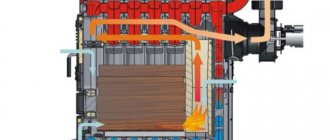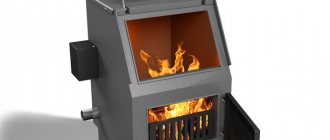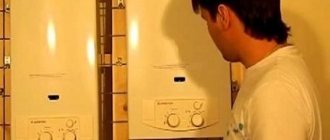Process description
The need for environmentally friendly equipment for the processing of chemical waste has arisen in our society for a long time. The first pyrolysis boilers began to run at the end of the nineteenth century. And the creation of modern pyrolysis units solved several issues at once:
- ecological component;
- the ability to accumulate the results of combustion;
- economic benefit.
However, the economic aspect of the use of pyrolysis is designed for the future. Pyrolysis is quite an expensive pleasure. It requires appropriate equipment and specially trained personnel.
But in operation, the pyrolysis plants are practically autonomous. The units require electricity only to start, the further operation of the boiler is carried out at the expense of the resources produced during the combustion process. At the same time, the surplus of generated energy and steam can be used for domestic purposes, redirecting them to utility networks.
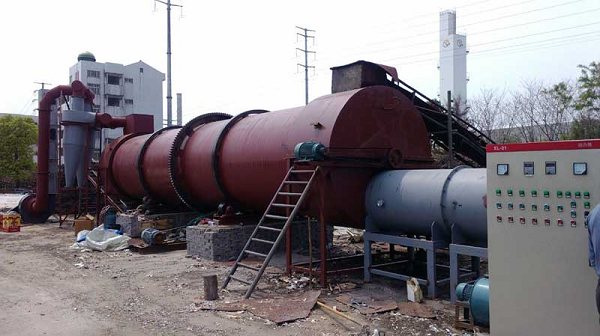
In Russia, pyrolysis is just beginning to gain popularity, while in Europe not a single large enterprise can do without pyrolysis units. There are quite a few reasons for such a demand for pyrolysis:
- a waste-free way of processing waste and all kinds of industrial pollution;
- the level of efficiency from pyrolysis is 90%;
- the possibility of obtaining new compounds, recyclable materials;
- the creation of irreplaceable resources such as synthetic oil;
- obtaining hydrocarbons, organic acids and other chemical elements;
- source of heat supply for enterprises.
Based on the choice of raw materials for processing, the pyrolysis reaction can proceed at different temperature conditions. The end result will also differ in the composition of chemical elements.
Depending on the heating temperature of the furnace and the additional components of pyrolysis, distillation is usually divided into two types: dry and oxidative.
Oxidative pyrolysis
This type of pyrolysis can be called the most environmentally friendly and productive. It is used to process recyclable materials. The reaction takes place at high temperatures. For example, in the pyrolysis of methane, it mixes with oxygen, the partial combustion of the substance releases energy, which heats the remaining raw material to a temperature of 16,000 ºС.
Oxidative pyrolysis is used to neutralize industrial waste with a high oil content. And also for the processing of plastic, rubber and other materials that do not lend themselves to natural decomposition in the natural environment.
“Oxidative pyrolysis makes it possible to process raw materials of various consistencies. Including materials in liquid and gaseous state ”.
The principle of operation of a long-burning pyrolysis boiler
Long-burning pyrolysis boilers are gaining considerable popularity, and especially in those areas where there is no access to gas
The operation of the equipment is based on the decomposition of organic fuel (firewood) under conditions of high temperature and lack of oxygen, followed by combustion of the released pyrolysis gases. Since the process can be conditionally divided into two stages, a firebox with two compartments is used for its flow. Fuel is placed in the loading chamber and starts to burn. The combustion process smoothly turns into thermal decomposition due to the restriction of the access of oxygen necessary for combustion. High temperature and low oxygen concentration lead to the formation of decomposition products: coke and pyrolysis gas. The latter, entering the second chamber, undergoes combustion already in the conditions of access of secondary air.It is supplied more often forcibly by means of a blower fan or a smoke exhauster. The combustion process takes place at temperatures above 1000 ° C. From the combustion products, heat is transferred to the liquid that fills the heat exchanger. The final gaseous products of the process are removed through the chimney. Today, long-burning pyrolysis boilers are considered the most efficient and economical heating equipment. The complex two-chamber design of the boiler explains its high cost. The efficiency, which is the highest among heating units, allows you to get a quick payback of the boiler.
Types of dry pyrolysis
Dry pyrolysis is one of the most demanded in the industry. With its help, fuel, various chemical compounds are obtained and recyclable materials are rendered harmless. Using different temperature regimes of pyrolysis, gas, liquid and solid combustion products are obtained.
Heating up the boiler to a maximum temperature of 5500 ºС is considered a low-temperature mode. At such temperatures, the formation of gases practically does not occur. The work is aimed at the production of semi-cokes (in industry they are actively used as a fuel) and resins, from which artificial rubber is subsequently produced.
The course of pyrolysis at temperatures from 550 to 9000 ºС is considered low-temperature, but in fact, given the technical capabilities, it belongs to the average temperature regime. Its use is advisable when it is necessary to produce pyrolysis gas and solid sediments. In this case, the feedstock may include fractions of inorganic origin.
The course of pyrolysis at temperatures above 9000 ° C is considered a high-temperature reaction. Operation of the boiler at a maximum temperature of 9000 ºC allows to obtain solid materials (coke, charcoal, etc.) with a low proportion of emitted gas.
Distillation using higher temperature conditions is necessary to obtain predominantly gaseous substances. The practical benefit of the high temperature regime is that the resulting gases can be used as fuel.
“High-temperature pyrolysis is not picky about the content of processed raw materials. When using the low temperature mode, all preparation steps must be followed, including drying and sorting. "
Pyrolysis. reference
Pyrolysis types
Oxidative pyrolysis - the process of thermal decomposition of industrial waste during their partial combustion or direct contact with the products of fuel combustion. This method is applicable for the disposal of many wastes, including those "inconvenient" for incineration or gasification: viscous, pasty waste, wet sediments, plastics, sludge with a high ash content, soil contaminated with fuel oil, oils and other compounds, and highly dusty waste.
In addition, wastes containing metals and their salts, which melt and ignite at normal combustion temperatures, waste tires, crushed cables, car scrap, etc., can undergo oxidative pyrolysis.
The method of oxidative pyrolysis is a promising direction for the elimination of solid industrial waste and wastewater.
Dry pyrolysis... This method of thermal treatment of waste ensures their highly efficient neutralization and use as fuel and chemical raw materials, which contributes to the creation of low-waste and non-waste technologies and the rational use of natural resources.
Dry pyrolysis is a thermal decomposition process without oxygen. The result is a pyrolysis gas with a high calorific value, a liquid product and a solid carbonaceous residue. Depending on the temperature at which the pyrolysis proceeds, it differs:
1. Low temperature pyrolysis or semi-coking (450–550 ° C).This type of pyrolysis is characterized by a maximum yield of liquid and solid (semi-coke) residues and a minimum yield of pyrolysis gas with a maximum heat of combustion. The method is suitable for the production of primary resin - a valuable liquid fuel, and for the processing of substandard rubber into monomers, which are the raw material for the secondary creation of rubber. The semi-coke can be used as energy and household fuel.
2. Medium temperature pyrolysis or medium-temperature coking (up to 800 ° C) yields more gas with lower calorific value and less liquid residue and coke.
3. High temperature pyrolysis or coking (900–1050 ° C). Here, there is a minimum yield of liquid and solid products and a maximum production of gas with a minimum calorific value - high-quality fuel suitable for long-distance transportation. As a result, the amount of resin and the content of valuable light fractions in it are reduced.
The method of dry pyrolysis is becoming more and more widespread and is one of the most promising methods for the disposal of solid organic waste and the isolation of valuable components from them at the present stage of the development of science and technology.
Hydrocarbon pyrolysis
The process of pyrolysis of hydrocarbons (800 900 ° C) (gas hydrocarbons, straight-run gasoline, atmospheric gas oil) is the main source of ethylene production and one of the main sources for the production of propylene, divinyl, benzene and a number of other products. The process of pyrolysis (cracking) of oil and gas raw materials was patented in 1877 by a Russian engineer, chemist Alexander Aleksandrovich Letniy.
Wood pyrolysis
During the pyrolysis of wood (450-500 ° C), a number of substances are formed, such as: charcoal, methyl alcohol, acetic acid, acetone, resin, etc. Russia is one of the richest countries in forests. Therefore, the world's best wood pyrolysis schools were formed and operated in Russia. Their contribution has received worldwide recognition.
Waste and waste pyrolysis
There are projects for the destruction of household waste using pyrolysis. Difficulties with the organization of pyrolysis of tires, plastics and other organic waste are not associated with the technology of pyrolysis itself, which does not differ from the technology of thermal processing of other solid materials.
The problem is that most waste contains phosphorus, chlorine and sulfur. Sulfur and phosphorus in oxidized form are volatile and harm the environment. Chlorine actively reacts with organic pyrolysis products with the formation of persistent toxic compounds (for example, dioxins).
Capturing these compounds from smoke is not cheap and has its own complexities. The problem of recycling worn-out automobile tires and out-of-service rubber products is of great ecological and economic importance for all developed countries of the world. And the irreplaceability of natural petroleum raw materials dictates the need to use secondary resources with maximum efficiency.
Tires and polymers are valuable raw materials, as a result of their processing by low-temperature pyrolysis (up to 500 ° C), liquid hydrocarbon fractions (synthetic oil), carbon residue (carbon black), steel cord and combustible gas are obtained. At the same time, if 1 ton of tires is burned, 270 kg of soot and 450 kg of toxic gases will be released into the atmosphere.
Advantages of pyrolysis plants:
1. Practically complete utilization of material and energy resources of solid waste and energy autonomy of the entire technological cycle are achieved.
2. Since thermal decomposition occurs without air access, there are no conditions for the formation of toxic compounds such as dioxin, furan, benzopyrene, etc.
3.The closed circuit, compactness of equipment and environmental friendliness determine the possibility of locating such an enterprise within the boundaries of any city.
4. Considering that the mineral component of MSW - ecologically clean slag after heat treatment - can be used for road works, this technology can be classified as completely waste-free.
5. These installations make it possible to profit from the sale of manufactured products (steam, electricity), in contrast to the production facilities operating today, where operating costs significantly exceed the income from sales, and the profitability of enterprises is based on payments from the population for waste processing.
For pyrolysis plants, there is no need to build capital structures and high chimneys. The units can be mounted under a shed or in light hangars on a concrete base.
The material was prepared on the basis of information from RIA Novosti and open sources
Solid waste pyrolysis
Environmentally friendly waste processing is one of the key areas of pyrolysis use. These units can significantly reduce the negative impact of the anthropogenic factor on the environment.
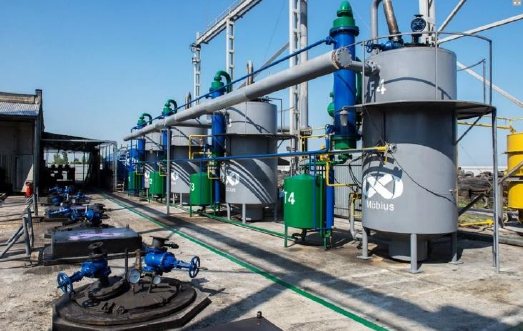

In the process of pyrolysis bioactive substances decompose, heavy metals are not smelted. After thermal decomposition in pyrolysis boilers, there is practically no unclaimed waste, which makes it possible to significantly reduce the area for their further storage.
So, for example, burning 1 ton of tires, we pollute the atmosphere with 300 kg of soot. In addition, about 500 kg of toxic substances are released into the air. Recycling of the same material in pyrolysis plants allows using rubber for energy purposes, obtaining recyclable materials for further production and significantly reduces harmful emissions.
It is possible to reduce the harmful effect on the environment thanks to a multi-stage processing system. In the pyrolysis process, waste goes through four stages of disposal:
- initial drying;
- cracking;
- afterburning of the remnants of processing in the atmosphere;
- purification of the obtained gaseous substances in special absorbers.
Pyrolysis plants allow you to process waste:
- wood processing enterprises;
- pharmaceutical industry;
- car industry;
- electrical engineering.
The pyrolysis method successfully handles polymers, sewage waste and household waste. Negates the impact on the nature of petroleum products. Great for organic waste disposal.
The only disadvantage of pyrolysis units is found in the processing of raw materials containing chlorine, sulfur, phosphorus and other toxic chemicals. The half-life products of these elements under the influence of temperature can combine with other substances and form toxic alloys.
The essence of the pyrolysis boiler
Such a pyrolysis boiler is also called a gas generator. The essence of work in pyrolysis fuel combustion: under the influence of high temperatures and in conditions of a lack of oxygen, solid fuel (brown coal, coal briquettes) decomposes into volatile particles. It turns out the so-called pyrolysis gas. Temperature indicators for heating equipment 200-800 degrees. This chemical reaction contributes to better heating and drying of the fuel in the boiler, heating takes place, which goes in the direction of air combustion.
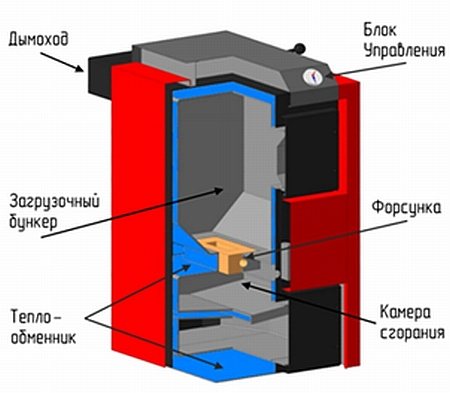

Fig. 2
The high temperature promotes the mixing of oxygen with the emitted pyrolysis gas. As a result, the gas burns. Thermal energy is generated from the burning gas. It should be noted that pyrolysis gas also interacts with active carbon during its combustion. Therefore, leaving the boiler, the flue gases have practically no harmful components. Rather, they are a mixture of carbon dioxide and water vapor. The resulting CO2 is released into the environment in three times less than after the operation of conventional emissions from coal or wood boilers.These units are considered environmentally friendly, do not pollute the environment.
Units of this type operate on coal and wood fuel. If you use poor quality raw fuel, the heater will lose its power up to 50%. Such fuel burns poorly, smokes, heats up little and shortens the life of the boiler and chimney.
Advantages of pyrolysis units:
- power is regulated from 30% to 100%;
- the cleaning and maintenance process is simple;
- low fuel consumption;
- fuel supply per day only once;
- a large amount of fuel burns together at once;
- the use of raw fuel by a coal boiler, the moisture content of which is not higher than 20%.
Disadvantages:
- expensive heating device;
- need electricity.
Each type of fuel burns differently. As for coal fuel, brown fuel burns in 8 hours, and black fuel - in 10 hours. With pyrolysis boilers, savings are possible, even taking into account such disadvantages as the need for electricity, not low cost. Electricity is needed to power the fan, but it only needs 85 watts to run (just like a regular light bulb). If this is a problem, then the diesel generator will deal with it.
Wood pyrolysis
This procedure is also called wood cracking, and it originated in Russia. The prototype of the modern unit was invented by our charcoal burners in time immemorial. To obtain charcoal without access to air, they ignited wood under a layer of earth.
Today this process is much more perfect and takes place in several stages. Cracking begins when heated to 2000 ºС. At this stage, a large amount of carbon monoxide is released. If you continue to burn it in the atmosphere, you will be able to get a huge amount of energy.
Then the boiler is heated up to 5000 ºС. In this temperature regime, methanol, resins, acetone and acetic acid are obtained. It also produces hard carbon, better known as charcoal.
Features of wood pyrolysis
Such pyrolysis is a procedure for burning wood without the presence of air, carried out at a temperature of about 5000 degrees. Acetic acid, acetone, methanol, and also resin are valuable products obtained in the course of such interaction. The peculiarity of this chemical reaction is that charcoal can be used as an excellent fuel to accelerate many chemical interactions.
Such pyrolysis is a process that begins to occur at two hundred degrees Celsius, accompanied by a reaction with the release of a mixture of carbon oxides. With the subsequent combustion of products in an atmosphere of atmospheric oxygen, an increase in the total calorific value is observed.
Wood pyrolysis is a separate section in chemistry that deserves detailed consideration and study.



